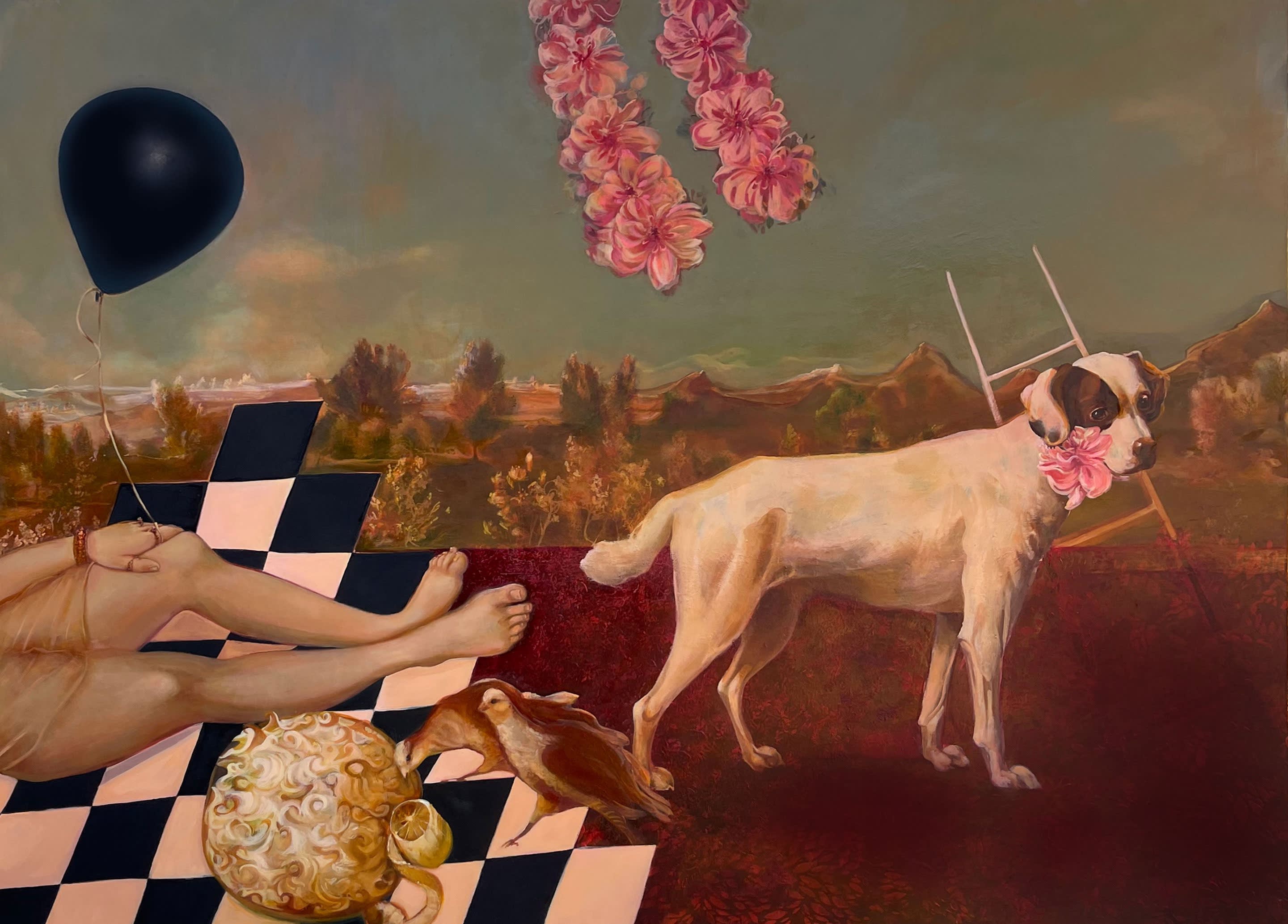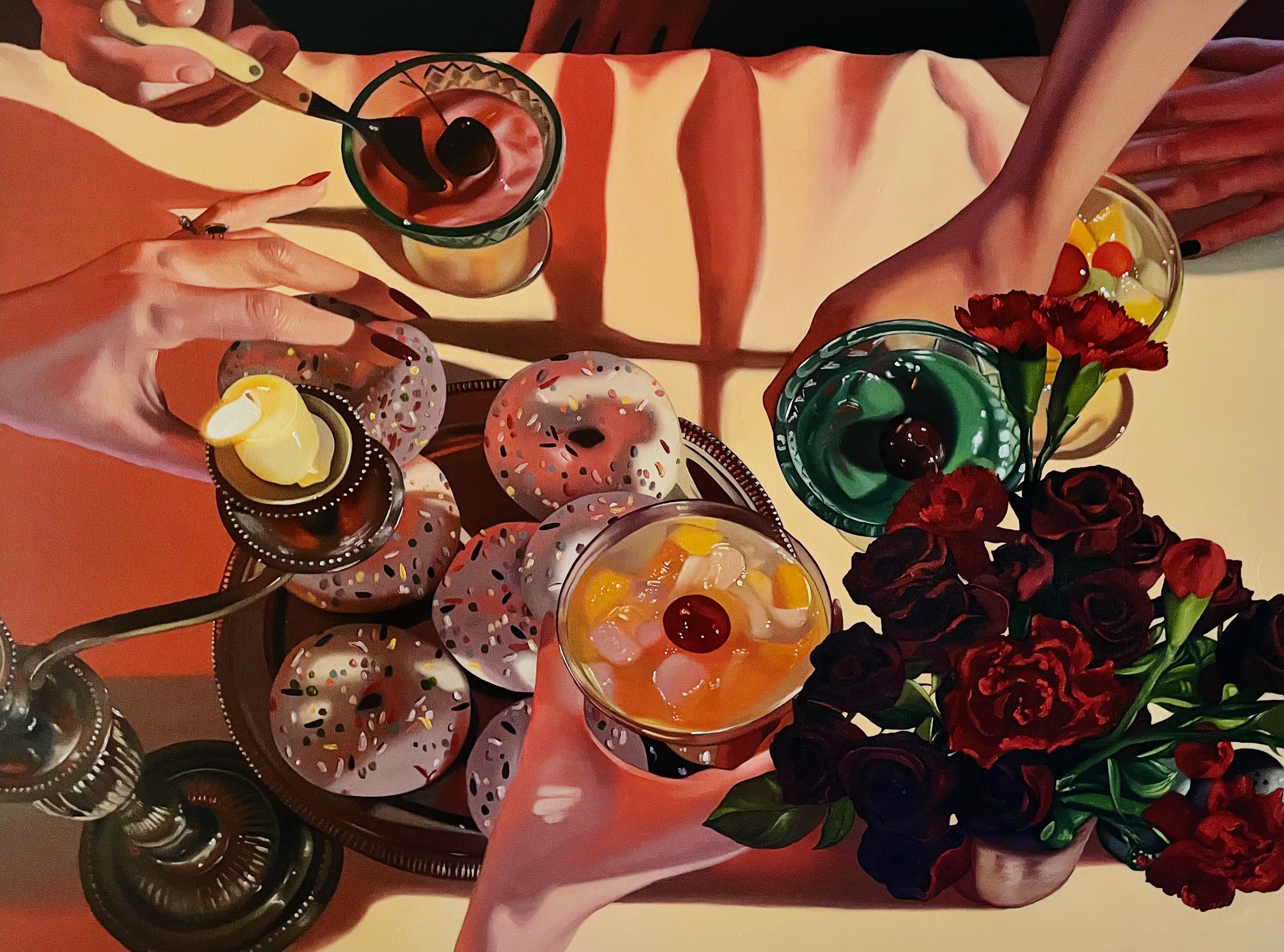Rare is the opportunity to view a mother-daughter companion show. Thérèse Mulgrew’s large-scale, still-life portraiture sets the scene of an endless dinner party where the playful and symbolically rich paintings of her mother, Wendy S. Rolfe, seem to adorn the corridors of attendees’ psyches. Mulgrew was a young attendee of her mother’s dinner parties—their roles in “Breaking Bread” are somewhat reversed. Rolfe’s paintings feature objects of childlike wonder: dogs, big glasses, and dolls awash in bubblegum pink, while Mulgrew documents table settings, hors d’oeuvres, and flowers with a surgical attention.
The meticulous clarity of Mulgrew’s oil paintings brings to mind the Vanitas series of pioneering photorealist/superrealist Audrey Flack (1931-2024). Like the 16th-17th century Dutch movement of the same name, Vanitas critiques worldly pleasures by drawing attention to the transitory nature of money, beauty, and power. Mulgrew’s Cocktail Hour accomplishes precisely this in a portrait of three women from collarbone to thigh, with sensual feminine curves and perfectly manicured hands on display. Yet the viewer is not permitted to luxuriate in these cocktail hour pleasures as the eye is drawn instead to what is most ephemeral—transient shadows of candelabra and delicately balanced martini glasses laid bare on a red dress.

Her mouth concentrated in a barely contained groan of disgust, the (presumed) host of Mulgrew’s Dinner Party may as well be reciting to herself the Vanitas namesake verse from Ecclesiastes 1:2-3: “Vanity of vanities; all is vanity. What profit hath a man of all his labour which he taketh under the sun?” Across the room in Rolfe’s Bird’s Eye View, the severed head of a monarch whispers the same while surveying the romantic landscape of her kingdom below.
“Breaking Bread” asks us to consider whether we are grasping in vain at shadows of pleasure, power, and beauty by magnifying the minutiae of our rituals of conviviality.



